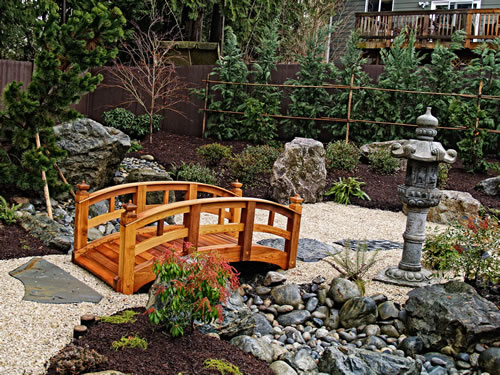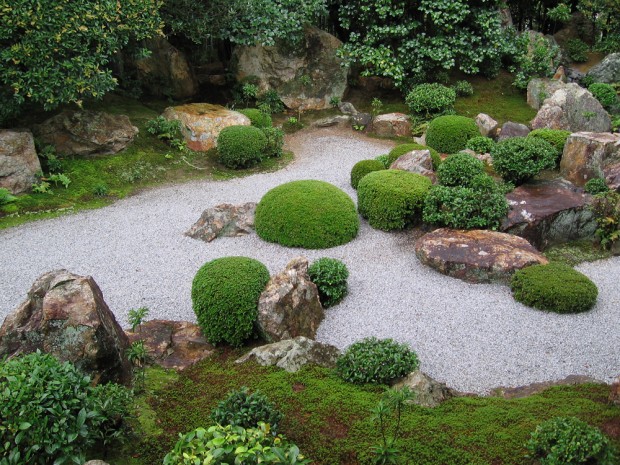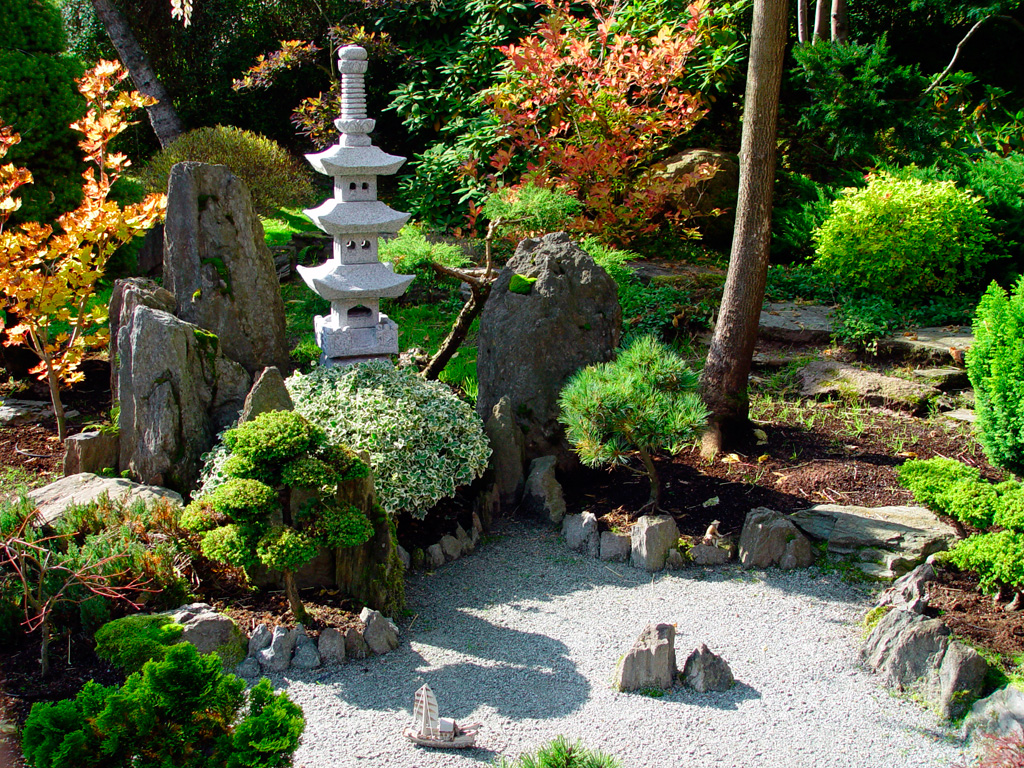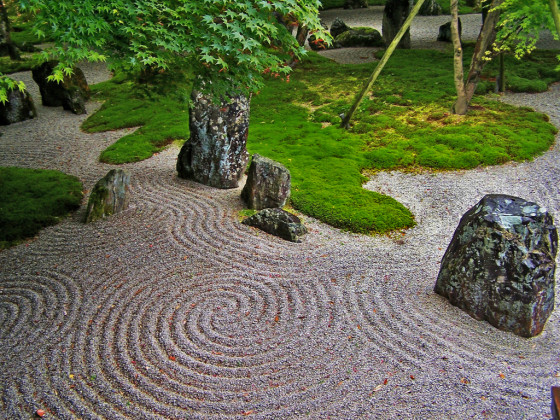Japanese Rock Gardens – Their Beauty and Order
A Zen garden refers to the Japanese tradition of rock gardens, where a few simple and natural elements are combined to create a tranquil, stark and symbolic garden. The garden is comprised of two main elements: sand and rocks. Gravel is also used in place of sand. Natural elements such as grass and ornamental trees surrounding the garden may also be used.
The Zen garden consists of a pit of sand or gravel, with carefully placed islands of rock. The sand is artfully raked daily in patterns that evoke the ripples of the sea.
Japanese rock gardens got the western name, “Zen Garden,” because of the tranquil nature of the garden, which encourage meditation and a Zen-like atmosphere. Zen, which is a school of Buddhism, is interpreted by many westerners to mean a state of introspection and enlightenment achieved by deep meditation.
There are several different types of Zen garden. The most famous is the dry garden, which is called “Karesansui.” This word translates into “dry mountain and water garden.”
This type of Zen garden is designed in such a way that the raked gravel resembles water. To create the look of water flowing, small rocks, pebbles, and sand are used.
Often in the dry Zen garden, you will see one large rock that is the predominant feature. This rock is representative of the mountains that tower over the countryside. With this type of garden, it is believed that the stillness of the “water”, being the gravel, is the peace and tranquility of the mind.
The purpose of the Zen garden is to provide a place of meditation and contemplation. When the Zen garden was first created by a Zen priest, it was actually called a Contemplation Garden. It was here in the United States that the term “Zen Garden” began.







[…] japanese zen garden id: 1765-10 | Credit […]